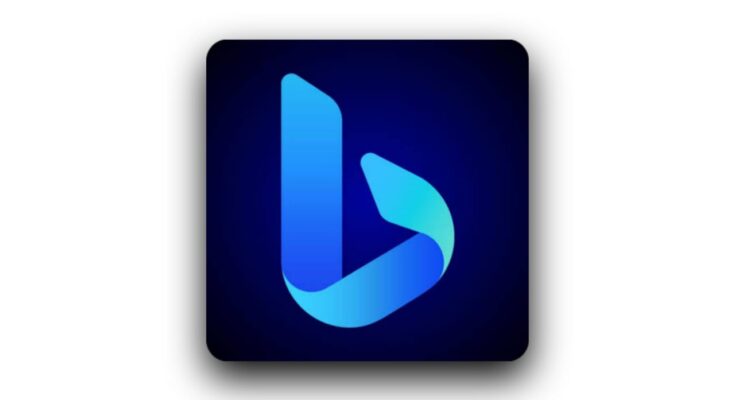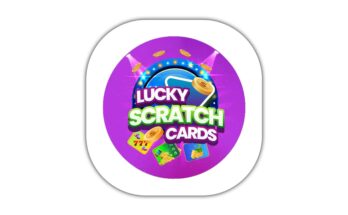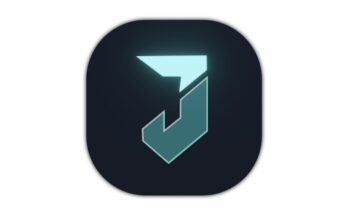Microsoft Bing has transformed from being just a search engine into an advanced tool powered by AI, offering innovative ways to search and interact with information. One of the most exciting developments is the ability to create images from words using AI. This feature, part of Bing’s collaboration with advanced AI models like DALL·E, is changing how people approach content creation, creativity, and digital media. In this article, we’ll dive deep into Bing’s AI-powered image generation, how it works, its potential applications, and what this means for users.
1. Introduction to AI-Powered Image Generation
The world of artificial intelligence (AI) has made great strides in recent years, and one of the most impressive innovations is the ability to generate images from text. Known as text-to-image generation, this capability allows users to input descriptive text, or “prompts,” and receive custom images created entirely by AI. Microsoft Bing, leveraging cutting-edge AI models like OpenAI’s DALL·E, offers this feature directly within its search ecosystem.
This AI-driven image creation technology has wide-reaching implications. From graphic designers and marketers to casual users who want unique visuals for personal projects, Bing’s text-to-image functionality opens up new possibilities for creative expression.
2. How Bing’s AI Image Generation Works
2.1 Natural Language Processing (NLP)
At the heart of Bing’s image generation technology is natural language processing (NLP). This branch of AI focuses on the interaction between computers and human language. When a user inputs a text description, Bing’s AI first interprets and understands the text through NLP, identifying the key elements that describe the image you want to generate.
For example, a simple prompt like “a sunset over the mountains with a lake” would be broken down by the AI into key visual components: sunset, mountains, and lake. The AI understands not just the objects themselves but also their relationships to one another, such as the sunset happening behind the mountains or the lake reflecting the colors of the sky.
2.2 Image Synthesis with DALL·E
Once Bing’s AI understands the text, it uses DALL·E, an advanced image-generation model developed by OpenAI. DALL·E, short for Salvador Dalí (inspired by the surrealist painter) and “Wall-E” (from the animated movie), is a neural network specifically trained to generate images from text descriptions. It was designed to understand context, objects, styles, and artistic expressions, making it capable of creating realistic and surreal images alike.
DALL·E generates images by interpreting the text input and synthesizing visuals that match the description. Whether you’re asking for something realistic, abstract, or completely fantastical, DALL·E has the creative capacity to bring your words to life.
2.3 Refining Image Quality
Once the initial image is generated, Bing’s AI refines the result using its vast library of data and previous outputs. This ensures the images are not just accurate to the prompt but also of high quality. The AI evaluates the image’s clarity, colors, and composition, ensuring users receive a polished final product.
3. Applications of AI-Generated Images in Bing
The ability to generate images from words is more than just a novelty; it has practical applications across various industries and for individual users.
3.1 Content Creation and Marketing
For content creators, marketers, and social media managers, AI-generated images provide a faster, more efficient way to produce unique visuals. Instead of relying on stock images or expensive custom designs, businesses can now generate exactly what they need by describing it in text. Whether it’s a product mockup, an artistic background, or even conceptual visuals for an advertising campaign, Bing’s AI can deliver.
By reducing the need for traditional design processes, this tool democratizes creativity, allowing businesses of all sizes to compete visually without heavy investments in graphic design software or personnel.
3.2 Personalized Digital Art
Artists and hobbyists are also finding new ways to express themselves through AI. With Bing’s image generation feature, users can quickly bring abstract ideas to life, visualizing their thoughts in ways that might have previously required extensive design skills or artistic expertise. AI-generated art can be used for personal projects, home decor, or even NFT (non-fungible token) creation, tapping into the growing digital art market.
3.3 Education and Visual Learning
Bing’s AI-powered image generation is a powerful tool for educators. Teachers and students can now easily create visual aids and illustrative images for use in presentations, study materials, and research projects. The ability to generate images from complex descriptions helps in making abstract or theoretical concepts more tangible and understandable.
For instance, students learning about history, literature, or science can ask Bing to generate images of historical landmarks, characters from classic novels, or even depictions of scientific theories. This enhances learning and helps convey information in a more engaging way.
3.4 Gaming and Entertainment
AI-generated images also have applications in the gaming and entertainment industry. Game developers can quickly create character designs, scenery, or concept art by simply describing their vision to the AI. This speeds up the creative process and reduces the bottlenecks often experienced in the early design stages of game development.
Similarly, in film and animation, scriptwriters and directors can visualize scenes, characters, or settings instantly using text prompts, providing valuable reference material for storyboards and pre-production planning.
4. How to Use Bing’s Image Generation Feature
Using Bing’s AI-powered image generation tool is straightforward. Here’s a step-by-step guide on how to get started:
4.1 Access Bing Search
First, access Bing’s search engine through a web browser or mobile app. The image generation feature is integrated into Bing’s existing search functionalities.
4.2 Input a Descriptive Text Prompt
In the search bar, type in a description of the image you’d like to generate. The more detailed your prompt, the more accurate the AI’s output will be. For example, you might type “a futuristic city skyline at night with neon lights” or “a panda bear eating bamboo in a tropical forest.”
4.3 Select the Image Generation Option
Once your text is entered, Bing will process the request and display a button or option to generate an image based on your description. Click on this option, and the AI will begin crafting your custom image.
4.4 Refine or Download the Image
After the image is generated, you can review it and decide if it meets your needs. If not, you can refine the prompt, adjusting details, and generate a new version. Once satisfied, you can download the image for use in your projects or share it directly from Bing.
5. Benefits of Microsoft Bing’s AI Image Creation
5.1 Accessibility and Ease of Use
One of the biggest advantages of Bing’s image generation tool is its accessibility. You don’t need to be a professional artist or have advanced design skills to create stunning visuals. The interface is user-friendly, making it simple for anyone to generate images with just a few words.
5.2 Saves Time and Resources
For businesses and individuals alike, this tool significantly reduces the time and resources required to produce high-quality images. Instead of hiring designers or purchasing stock images, you can quickly create custom visuals tailored to your specific needs.
5.3 Endless Creative Possibilities
The versatility of AI-generated images is virtually limitless. Whether you need realistic photos, abstract art, or surrealist designs, Bing’s AI can accommodate a wide range of artistic styles and genres.
6. Ethical Considerations and Limitations
As with any AI technology, the rise of image generation tools raises ethical questions, particularly around intellectual property and content authenticity. It’s essential to use these tools responsibly and ensure that AI-generated images are not being misused to create misleading or harmful content.
6.1 Copyright and Ownership
When AI generates an image, the question of ownership arises. Users need to be aware of the terms and conditions related to using AI-generated content, especially when it comes to commercial use.
6.2 Potential for Misinformation
AI-generated images, while powerful, also have the potential to create convincing fake visuals. This makes it important for platforms to implement safeguards to prevent the spread of misinformation or deceptive content.
For Girl
Realistic 16 year old cute stylish attitude Girl standing up leaning on a Large Black 3D “S” name letter side and face down. Girl wearing black full t-shirt and black jeans, black shoes, watch stylish hair, The background black wall should ensure that the name is not misspelled
FOR BOY
Realistic 16 year old cute stylish attitude boy standing up leaning on a Large Black 3D “S” name letter side and face down. boy wearing black full t-shirt and black jeans, black shoes, watch stylish hair, The background black wall should ensure that the name is not misspelled
Microsoft Bing’s AI-powered image creation feature represents a significant leap forward in the intersection of AI, search, and creativity. Whether for business, education, or personal use, the ability to create images from words is revolutionizing the way we interact with visual content. With easy-to-use tools and powerful AI models like DALL·E behind it, Bing has positioned itself at the forefront of the AI-powered creative revolution.
As AI continues to evolve, so too will the possibilities for generating custom visuals from simple text descriptions, offering endless potential for creativity and innovation.



